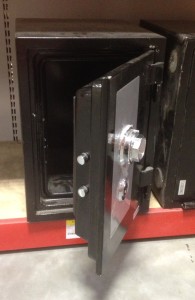Do You Want A Safe?
 Most home burglaries are carried out by opportunistic thieves.
Most home burglaries are carried out by opportunistic thieves.
They want to be in and out as fast as possible.
A safe that takes that takes time and effort is going to deter them, and help keep you valuables safe.
Yes you can always keep things in a bank deposit box, but it may not be very convenient.
What Sort of Safe?
Well you can get a basic small home safe for less than $80, or pay well over $1,000, so here are some thoughts on choice:
What do You Want to Keep Secure?
In my case it’s passports, wills, portable hard drives, and small amounts of foreign currency, so a small safe would be fine for me.
If you have got lots of expensive jewelry, want to secure your lap top, or other large items you will need something bigger.
It’s probably best to get all your valuables together before you make a decision on size.
Combination or Key?
I would agree with a recent survey I saw that came out with the result that twice as many people prefer keys. We all have too many PIN numbers to remember.
If you do go for a combination lock make sure you change it from the manufacturers standard settings. . . I have heard locksmiths say that their standard opening technique for a combination safe is to enter the standard setting which works for well over half the safes.
Fire Protection
A basic safe is just a heavy steel box with a steel door and doesn’t offer any protection against fire or even smoke damage.
I would recommend that you you look for something with insulation that offers at least one hours fire protection
Location?
A common site is in the WIR of the master bedroom which in convenient . . . but obvious for a burglar. A better site might be the larder/pantry or in the wardrobe of a second bedroom.
For a typical Australian house a safe bolted down to the floor is the best option rather than a wall safe. It should be bolted into a concrete slab, or a floor joist. (You don’t want to make it too easy for thieves to break it out and take it with them)